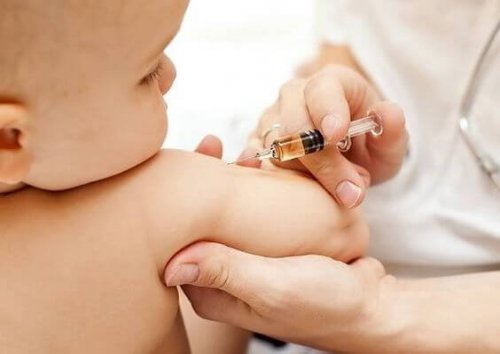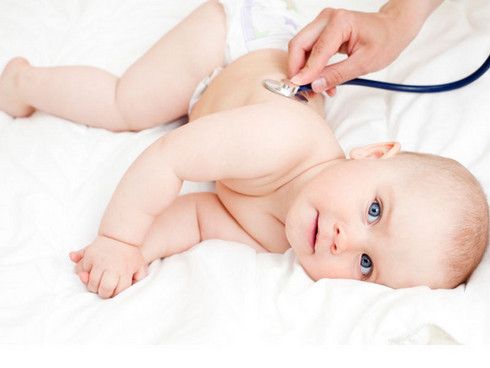The Risk of Whooping Cough for Babies

Whooping cough, also called pertussis, is a serious illness caused by a bacterial infection of the respiratory system. It is characterized by coughing fits followed by a sharp sound upon inhalation.
This contagious respiratory illness affects mostly infants under six months that haven’t been vaccinated against pertussis in a timely manner. It can also affect children between 11 and 18 years whose vaccine immunization has been reduced.
Whooping cough vaccines have considerably reduced the number of deaths from this illness. However, many babies and children still die because they don’t receive treatment in time, when whooping cough causes them to stop breathing.
In this article, we’ll share how you can protect your child from whooping cough. Have you and your child been vaccinated to prevent this disease? If you haven’t, you should consider getting this preventative vaccine done.

How whooping cough spreads
Whooping cough is typically transmitted through coughing or sneezing around others who inhale the bacteria. That’s why many babies get the infection from their parents, siblings, or caregivers, who may not even know they have whooping cough.
Upon contracting this illness, their lungs and respiratory passages begin to get inflamed. Then the trachea gets infected, which causes a persistent violent cough.
This illness is named after the sounds it produces in children and adults alike. When they try to breathe in between coughing fits, you’ll hear a whooping cough.
Symptoms of whooping cough
The first symptoms of whooping cough that appear are usually the same as those of a common cold.
- Nasal mucous
- Sneezing
- Light cough
- Low fever
After two weeks, the dry and irritating cough transforms into coughing fits lasting longer than a minute. They can be very difficult to control.
During these intense coughing fits, the child can become red or purple. When the coughing fit ends, they can make noises while inhaling or even vomit.
Although many babies and children exhibit these symptoms, they might not be present in every single case.
Some little ones don’t cough or make noises. They may feel like they can’t get air to breathe or even stop breathing for a few seconds.
Likewise, your little one may have contracted pneumonia (a lung infection) and have difficulty breathing. About half of babies with whooping cough are hospitalized, and a few of them die each year.
It’s important to remember during these coughing fits that the baby’s lips and fingernails may turn blue due to lack of oxygen. The child may also expel or vomit a thick mucous.
Specific Risks for Babies
Whooping cough represents a true risk for any baby under one year of age. They may suffer complications like pneumonia, convulsions, brain damage, or even death. That’s why specialists recommend taking the baby to urgent care immediately.
Pediatric specialists can advise parents and suggest going to the hospital if the baby has difficulty breathing, persistent vomiting, convulsions, or symptoms of dehydration.
Whooping cough prevention
Whooping cough can be prevented by administering the DTaP vaccine (diphtheria, tetanus, and acellular whooping cough). This is given in five doses before reaching six years of age. The American Pediatric Academy also recommends that children between 11 and 18 receive a booster, for additional protection.
Likewise, this vaccine can be administered to adults who haven’t been previously vaccinated, especially when these adults are sharing a home with infants.
The adults could potentially develop complications of whooping cough that could put the infant’s life in danger.

When to call the pediatrician
If you suspect that your baby contracted whooping cough or was in contact with someone with whooping cough, even if they’ve received all of their preventative vaccines, you should consult your peditatrician. Even more so, if your baby suffers from prolonged coughing fits.
The warning signs are intensified if these coughing fits are accompanied by any of the following:
- Their skin, lips or fingernails turn red, purple or blue
- They vomit right away, even including vomiting thick mucous
- They make a sharp sound upon inhaling after coughing
- They have difficulty breathing or have brief episodes where they stop breathing (apneas)
- They have difficulty moving normally
All cited sources were thoroughly reviewed by our team to ensure their quality, reliability, currency, and validity. The bibliography of this article was considered reliable and of academic or scientific accuracy.
- Campins, M., Moreno-Pérez, D., Gil-de Miguel, A., González-Romo, F., Moraga-Llop, F. A., Arístegui-Fernández, J., … & Salleras-Sanmartí, L. (2013). Tos ferina en España. Situación epidemiológica y estrategias de prevención y control. Recomendaciones del Grupo de Trabajo de Tos ferina. Enfermedades Infecciosas y Microbiología Clínica, 31(4), 240-253. https://www.sciencedirect.com/science/article/pii/S0213005X12004521
- Dotres Martínez, C., Vega Mendoza, D., Toraño Peraza, G., Álvarez Carmenate, M., & Broche Morera, A. (2012). Síndrome coqueluchoide y tos ferina. Revista Cubana de medicina general integral, 28(4), 725-734. http://scielo.sld.cu/scielo.php?script=sci_arttext&pid=s0864-21252012000400015
- Moraga-Llop, F. A., Griñant, S. I., Gómez, X. M., Grau, G. C., Hernando, P. G., & Martí, M. C. (2012). Tos ferina en el lactante.¿ Quién lo contagia?. Vacunas, 13(3), 88-94. https://www.sciencedirect.com/science/article/pii/S1576988712700468
- Tuma, S. M. U., Gómez, X. M., Martí, M. C., Grau, G. C., Marcelles, A. F., Pendás, J. Á. R., … & Llop, F. A. M. (2013). Estudio de contactos de casos pediátricos de tos ferina en un hospital de tercer nivel de Barcelona. Medicina Clínica, 141(9), 376-381. https://www.sciencedirect.com/science/article/pii/S002577531200807X
This text is provided for informational purposes only and does not replace consultation with a professional. If in doubt, consult your specialist.
